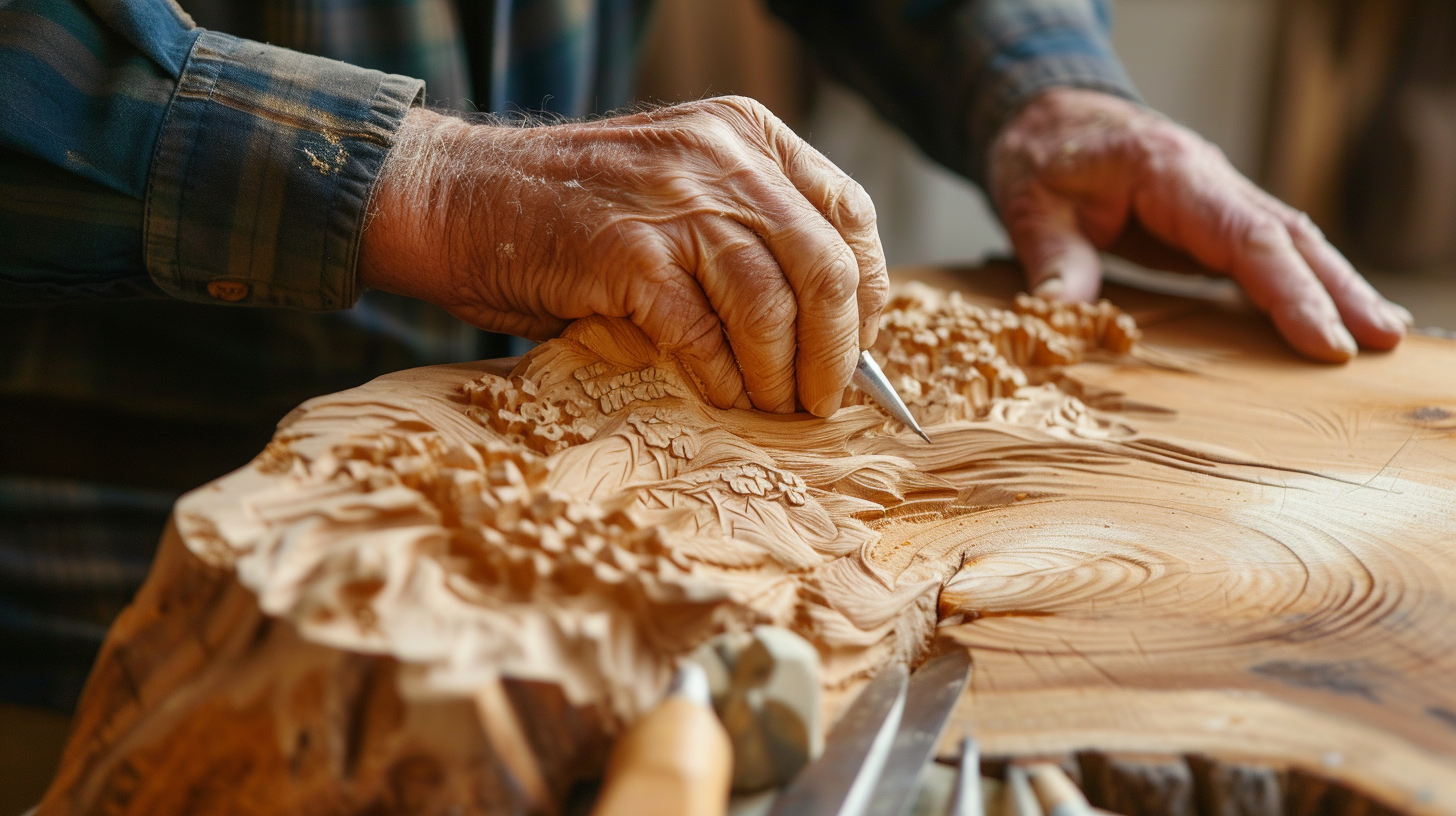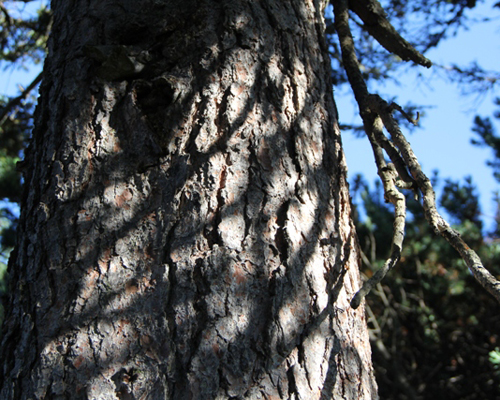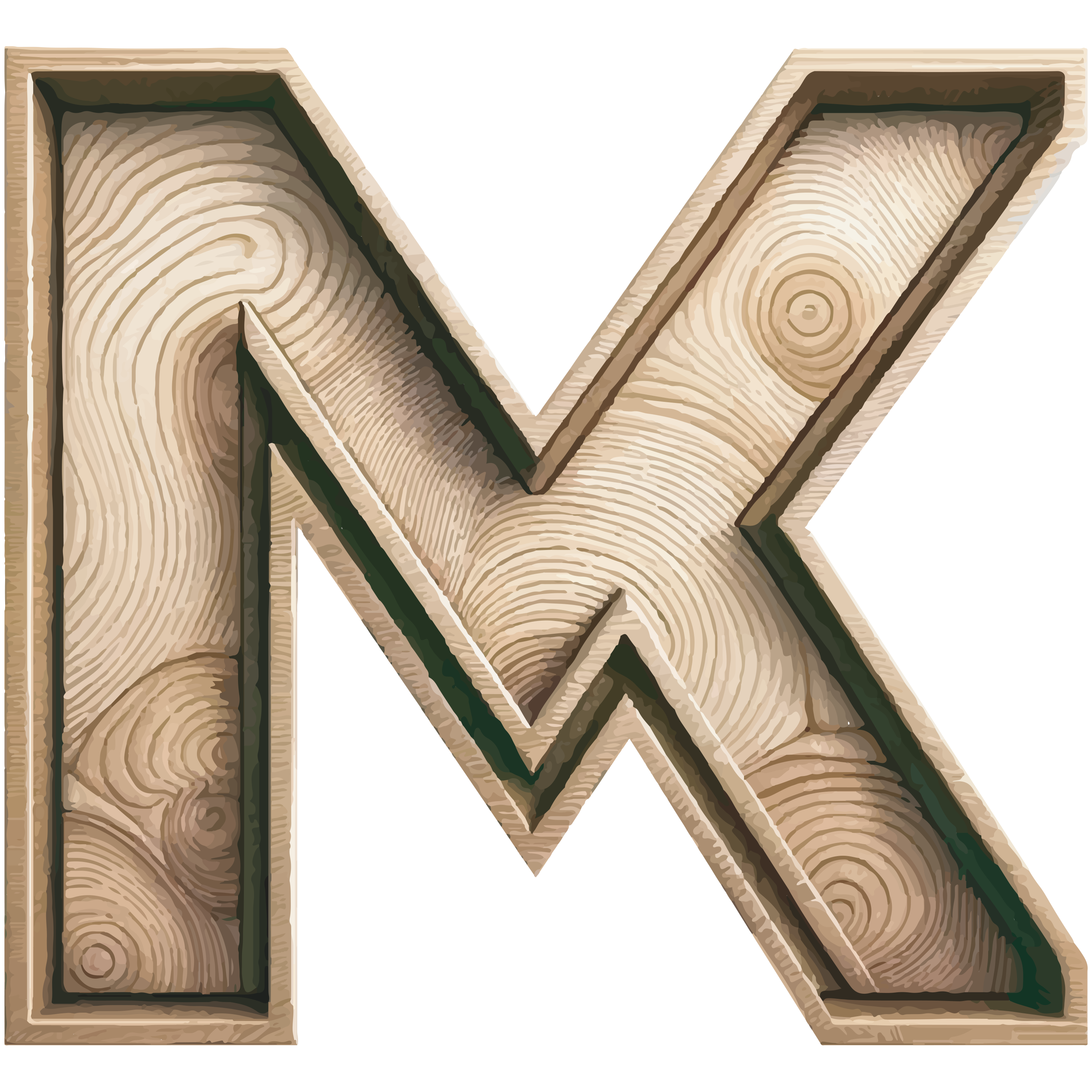
Carving
Carving is a technique of manual woodworking. Knives, chisels, and gouges are used for carving. Today, not much is carved because many ‘carvings’ can be produced much faster and more cost-effectively with industrial CNC machines.
Artists or wood sculptors, and even instrument makers, are the ones who are most likely to still carve. We like carving. It has something archaic and also something meditative about it. Carving is a creative process in which you have to consider what you can conjure from the workpiece. Carving is a true act of creation. You have an idea and must consider from the very first application of the knife to the workpiece what it should become. With wood, this includes aspects such as the course of the grain, the density of the material, the color nuances, and potentially other aspects like enclosed branches.
The larch bark that we ‘carve’ is no different, except that the material brings some special challenges. Bark can be extremely hard or semi-rotted in terms of consistency or density. Working hard bark is grueling and has often given us blisters on our hands. On the other hand, semi-rotted bark is very fragile and often breaks just by looking at it. These differences make carving with bark a real challenge that can only be managed with a delicate touch. Working with heavier equipment, such as a milling machine, is futile. We’ve tried it, but then shreds fly across the workshop.
Therefore, carving with bark forces us to a certain slowness in processing, but we believe this careful handling of the material is worthwhile.
Tools
Gouges, flat chisels, spoon chisels, V-parting tools, or flower irons? With around a thousand different carving tools available, choosing the right one can be a challenge. The choice of tool depends on the material and also on what is to be created from it and in what size.
For us, this primarily includes flat and U-shaped chisels and gouges of various widths, and we also need a few drills and milling cutters. For the rough work on larch bark, Swiss pine wood, and worm-eaten branches, we mainly use a standard utility knife with replaceable blades.
There are several reasons for this. First, we can hardly clamp our workpieces in a workbench (larch bark can’t withstand the pressure), so we have to hold them in our hands. This makes using a chisel or gouge dangerous. A utility knife is safer to handle and poses a lower risk of injury. Secondly, larch barks are often contaminated with soil, sand, and sometimes even stones. Such contamination quickly dulls chisels, and they require laborious resharpening. With a utility knife, you simply snap off a corner and continue working.v

Larch Bark
The larch, or ‘Larix,’ is a majestic tree belonging to the pine family. It grows in the temperate climate zones of the Northern Hemisphere.
What makes the larch particularly interesting for us is the fact that it develops an incredibly thick bark. Over the years, we have collected larch barks with a thickness of up to 15 cm. To collect larch bark, we obviously do NOT cut down trees. We only look for older tree stumps from which we can detach the bark pieces as large plates. With fresh tree stumps, you can’t remove the bark without breaking it.
We stored these pieces of larch bark for several years to dry, as moist bark is not suitable for carving.
Larch bark is fundamentally a poor material for carving, as its texture can be very inhomogeneous – partly extremely soft, partly stone-hard, and partly half-rotted or decayed. This makes further processing difficult and requires a certain finesse in handling.
However, the grain and coloration provide an absolutely unbeatable and archaic look. In the right light, the carved figures simply have ‘more body’ and radiance. The same figure made of Swiss pine or lime wood looks pale and almost bland in comparison.
Light is a special topic altogether. Those who look at our MOAI figures will notice that they have no eyes. But if you position the figure in the right light from above (or the sun), you will notice that they somehow do have eyes. It’s the shadow of the forehead area that, depending on the angle of light, seemingly gives the figures eyes. Try out this play of shadows, especially when you want to position the figure in the right light at home. Light breathes life into our MOAIs!



